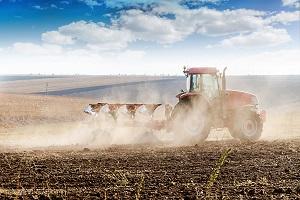
Nitrogen (N) is essential for life. It is an element of chlorophyll in plants and of protein (amino acids) in animals and humans. As such, it is a major nutrient to allow food, fibre and biofuel production.
However, human activities over the last century (use of synthetic inorganic N fertilizers; land-use change; urbanization; combustion processes; and transport of food and feed across the world) have more than doubled the total amount of N introduced into the global biosphere, greatly altering the natural N cycle. This has led to a web of pollution problems, including air pollution, water pollution, greenhouse gas (GHG) emissions, stratospheric ozone depletion, biodiversity loss and soil acidification, affecting the entire planet.
To address these pollution problems globally, a new Guidance Document on Integrated Sustainable Nitrogen Management, has, on 18 December 2020, been adopted by Parties to the UNECE Convention on Long-range Transboundary Air Pollution (Air Convention).
The new Guidance document will give governments, farmers and their advisers the evidence they need to reduce the nitrogen that is wasted to air and water, which is estimated at around USD 200 billion annually. It will help reduce nitrogen losses, keeping more nitrogen on farms, where it is needed, with benefits for food production, the economy, the environment and human health. The Guidance recognizes that the cost and effectiveness of measures to reduce N losses need to take account of the regional opportunities and constraints of farmers, including farm size, farm structure and economic context.
“The Guidance will support Parties of the Convention in the implementation of the 1999 Protocol to Abate Acidification, Eutrophication and Ground-level Ozone and its 2012 amended version (Gothenburg Protocol). It complements the Guidance document on preventing and abating ammonia emissions from agricultural sources, adopted in 2012. With this work, the Convention continues to play a pioneering role in tackling the main causes of Air Pollution”, declared Anna Engleryd, chair of the UNECE Air Convention’s Executive Body.
The Guidance demonstrates how actions to control air pollution have co-benefits for climate, water, biodiversity, health and the economy. It identifies 24 principles to help Parties understand and tailor solutions, summarises 76 measures and their performance for abatement of different nitrogen forms and illustrates how to develop Packages of Measures to improve coherence.
The goal of the document is to mobilize efforts to control air and nitrogen pollution from agricultural sources in the context of the wider nitrogen cycle. Sustainable nitrogen management provides the foundation to strengthen an emerging “nitrogen circular economy”, reducing N losses and promoting recovery and reuse.
“By aiming to harvest multiple co-benefits of better nitrogen management, the Guidance will help maximize synergies, minimize trade-offs and accelerate progress towards the Sustainable Development Goals,” said lead author of the guidance, Prof. Mark Sutton, of the UK Centre for Ecology & Hydrology. Sutton continued: “For the first time all the main nitrogen losses relevant for air, climate and water have been brought together to create this international guidance. The adoption of this is a major step towards tacking the nitrogen pollution issues globally. With sound nitrogen management, not only will air and water quality benefit, but it’ll help mitigate climate change as well.”
Note to editors
About Nitrogen
Nitrogen exists in multiple forms. A distinction is made in the Guidance between unreactive atmospheric dinitrogen (N2), which forms the main constituent of air (78 per cent), and reactive nitrogen forms (Nr), which represent valuable resources. Around 80 per cent of anthropogenic Nr production is wasted as air and water pollution and through denitrification back to N2.
The Guidance is focused on agriculture in the context of the food system, and includes specific information on the principles and measures that can reduce emissions to the air of ammonia (NH3), nitrogen oxides (NOx), nitrous oxide (N2O) and N2, plus nitrate (NO3 – ) and other Nr leaching to water and total N loss.
Nitrogen moves from soil to plants and animals, to air and water bodies, and back again, with international transboundary pollution transport of most nitrogen forms. These flows are a result of natural drivers and human activities, which have to be understood for effective N management.
Only a minor fraction of the N intake is retained by animals and humans in body weight, milk and eggs. The remainder is excreted, mainly via urine and faeces, and can be recycled and reused.
About the Guidance
The present document has been prepared under the lead of the UNECE Convention on Long-range Transboundary Air Pollution (Air Convention) as part of its work to reduce air pollution impacts, including from acidification, eutrophication, ground-level ozone and particulate matter (PM), as these affect human health, biodiversity and economy. It was adopted by the Executive Body – the supreme body of the Air Convention.
It is simultaneously a contribution from the International Nitrogen Management System (INMS), delivering support to the developing Inter-convention Nitrogen Coordination Mechanism (INCOM) in partnership with the United Nations Environment Programme (UNEP), the Global Environment Facility (GEF) and the International Nitrogen Initiative.
This activity aims to promote synergies through cooperation between the Air Convention and other intergovernmental conventions and programmes, thereby accelerating progress in nitrogen-related challenges in implementing United Nations Environment Assembly resolution 4/14, adopted in March 2019.

